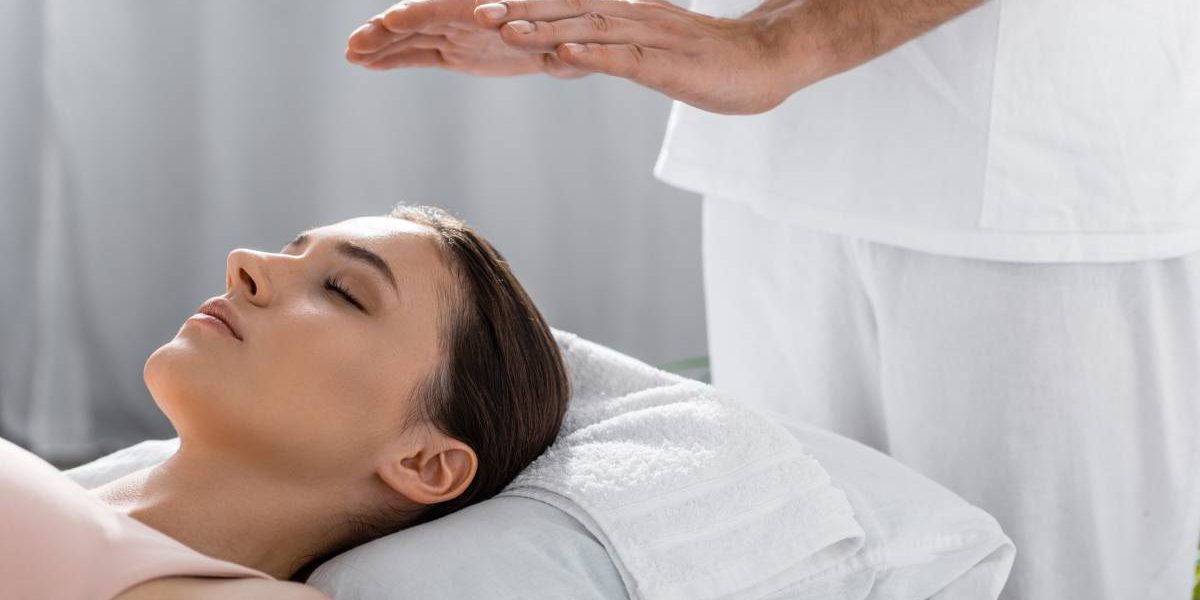In today’s fast-paced world, where stress and emotional turmoil are common, people are turning to holistic therapies like Reiki. This Japanese technique promotes relaxation, reduces pain, and enhances emotional well-being.
Reiki is based on the belief that energy flows through all living beings, and by restoring balance to this energy, one can heal the body, mind, and spirit.
Reiki has gained global popularity for its ability to address physical and emotional imbalances, helping individuals manage stress, anxiety, and trauma.
In this article, we’ll explore Reiki’s purpose and its profound effects after a healing session, offering insights for both newcomers and those already familiar with the practice.
How Does Reiki Work?
Reiki is a non-invasive, hands-on healing technique where a practitioner uses light touch or no touch at all to guide the flow of ki energy into the recipient’s body. The energy is believed to flow to areas of need, helping clear blockages and restore natural energy flow.
While scientific proof of ki energy is lacking, many people report significant benefits, including addressing physical and emotional imbalances caused by stress, trauma, illness, or conditions like peripheral neuropathy.
Reiki can be practiced both in-person and remotely, with practitioners focusing energy on the recipient from a distance. Reiki is a complementary therapy, not a substitute for conventional medical treatment.
The Main Purpose of Reiki
The primary goal of Reiki is to support the body’s natural healing abilities and promote a sense of balance, relaxation, and overall well-being.
Reiki is a holistic practice that aims to address not only the physical body but also the emotional, mental, and spiritual aspects of a person’s health. Some of the main purposes of Reiki include:
1. Promoting Relaxation
One of the key benefits of Reiki is its ability to induce deep relaxation. The gentle, soothing touch of the practitioner helps to calm the nervous system and reduce the body’s stress response.
Reiki is often described as deeply relaxing, with many recipients experiencing a sense of peace and calm during the session. This relaxation can help alleviate symptoms of anxiety, stress, and tension, which are common causes of illness and discomfort.
2. Supporting the Body’s Natural Healing Processes
Reiki is thought to enhance the body’s natural ability to heal itself. By clearing energy blockages and restoring balance to the flow of energy, Reiki supports the body’s own healing mechanisms.
Many people use Reiki as a complementary therapy to support their recovery from surgery, illness, or injury. It is particularly beneficial in helping individuals recover more quickly and feel less fatigued or stressed during the healing process.
3. Reducing Pain and Discomfort
Another main purpose of Reiki is to help reduce physical pain and discomfort. Whether it’s chronic pain from conditions such as arthritis, migraines, or back pain, or acute pain from an injury, Reiki is believed to help ease pain by restoring the flow of energy to the affected areas. While it is not a direct pain management technique, many people report feeling relief after receiving Reiki sessions.
4. Balancing Emotional and Mental Health
Reiki can also help balance emotional and mental health. Stress, trauma, and emotional disturbances can create energy blockages in the body, which in turn can contribute to physical ailments or mental health issues.
Reiki is used to release these blockages, helping to restore emotional balance and mental clarity. Many individuals seek Reiki for its calming and centering effects, particularly when dealing with anxiety, depression, or grief.
5. Enhancing Spiritual Growth
Reiki is also a spiritual practice that promotes personal growth and self-awareness. It is believed to help individuals connect to their inner selves, gain clarity, and find a sense of purpose.
Reiki can be a tool for those looking to enhance their spiritual journey, offering a means of deepening meditation, quieting the mind, and aligning the body, mind, and spirit.
What Happens to Your Body After Reiki Healing?
After a Reiki session, the recipient’s body may go through a variety of experiences. Many people report feeling deeply relaxed, calm, and at peace.
However, reactions can vary depending on the person, their emotional state, and the areas of the body that were worked on during the session.
1. Deep Relaxation and Calm
The most common reaction to Reiki is a deep sense of relaxation. Many people report feeling a profound sense of calm that lasts long after the session is over.
This relaxation helps to reduce stress, anxiety, and tension, allowing the body to enter a state of healing. Some recipients may even fall asleep during the session, which is a sign that the body is letting go of stress and entering a restorative state.
2. Increased Energy and Vitality
After a Reiki session, many people report feeling more energized and refreshed. This can be attributed to the restoration of energy balance within the body.
Reiki is believed to help remove energy blockages that may have been draining the body of its natural vitality.
Once these blockages are cleared, the body can function more efficiently, leading to a sense of rejuvenation.
3. Emotional Release
Reiki can help release emotional blockages, which may result in emotional release during or after the session.
Some people may experience tears, laughter, or a sense of relief as they let go of pent-up emotions. While this can be an emotional experience, it is considered a positive outcome, as it allows the body to heal on an emotional level.
4. Pain Relief
As Reiki helps to restore balance to the body’s energy flow, some individuals report a reduction in physical pain after a session.
While Reiki is not a direct pain treatment, many recipients find relief from conditions such as muscle tension, joint pain, or headaches after their session. The healing energy is believed to work by promoting circulation and easing tension in the body.
5. Improved Sleep
Many people find that they sleep better after receiving Reiki. The deep relaxation that occurs during a session can continue to affect the body long after the session ends, helping to improve the quality of sleep.
People with insomnia or sleep disturbances often report that their sleep improves following Reiki treatments.
6. Detoxification
Reiki can also encourage the body’s natural detoxification processes. After a session, some people experience mild symptoms of detoxification, such as headaches, fatigue, or digestive changes.
These reactions are generally short-lived and are often seen as part of the body’s healing process as it clears out toxins and restores balance.
Conclusion
Reiki is a healing practice that focuses on the balance and flow of energy within the body. It is used to promote relaxation, relieve stress, reduce pain, and support emotional and spiritual well-being.
While the scientific evidence behind Reiki is still limited, many people find it to be a valuable complementary therapy for improving overall health and well-being.
After a Reiki session, individuals often experience deep relaxation, increased energy, emotional release, and pain relief.
Reiki provides a holistic approach to healing, addressing the mind, body, and spirit to restore balance and promote wellness. Whether you seek it for physical ailments, emotional support, or spiritual growth, Reiki can offer a pathway to healing and rejuvenation.











